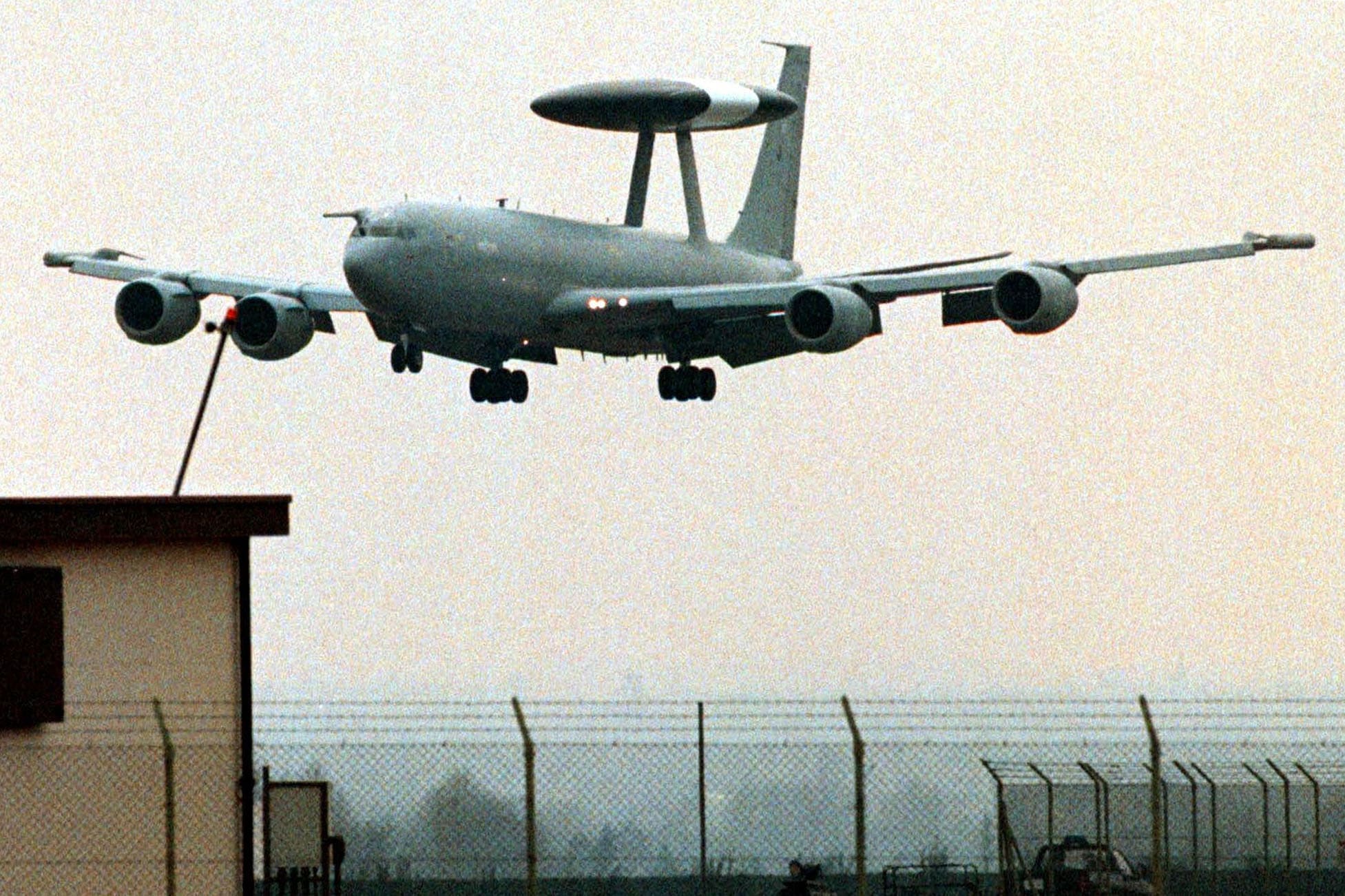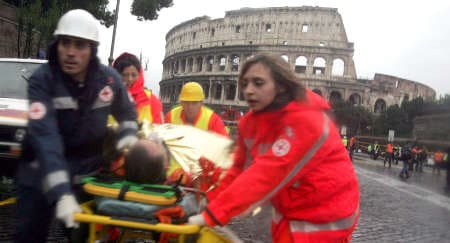NATO is already making a major contribution to tackling terrorism. So why does it need a strategy for combating terrorism? Could it really make such a major positive difference? Seda Gurkan feels that it just might.
Nobody could claim that NATO is ignorant of the threat of terrorism. Its heads of state said in November 2006 that ‘terrorism…together with the spread of weapons of mass destruction, are likely to be the principal threats to the Alliance over the next 10 to 15 years.’
NATO also has a clearly stated, albeit rather general, resolution on terrorism stating it is “protecting Allied nations’ populations, territories, infrastructure and forces, and fighting terrorism together as long as necessary and in all its forms”.
The attacks against the US on 11 September 2001 moved the fight against terrorism right up NATO’s agenda. Since then Allies individually - and the Alliance collectively - have shown a strong determination to play their part in the fight against terrorism. NATO, in a very short period of time, has made significant progress in adapting every aspect of its work to face this threat.

Eye in the sky: an AWACS aircraft returns to base having provided special security and anti-terrorist surveillance to the Olympic Games © Reporters
However, the Alliance lacks a strategy that links its terrorism fighting capabilities into an adequately detailed objective. NATO has the tools and a goal but lacks a vision and a sense of purpose - in other words, a strategy for fighting terrorism.
Transnational terrorism requires an international, multifaceted and comprehensive response. It needs co-ordinated use of political, economic, diplomatic, legal, social and, if necessary, military means. The means at NATO’s disposal make it undoubtedly one of the best equipped international organisations to deal with the threat posed by transnational terrorism.
What can NATO offer?
Firstly, the major strength of the Alliance in the fight against terrorism is Article 5, which states that an armed attack on one or more of the Allies shall be considered an attack on them all. Immediately after the attacks on the US on 11 September 2001, the North Atlantic Council concluded that this commitment “remains no less valid and no less essential today, in a world subject to international terrorism.” The Council decided that, if the terrorist attacks on the United States were determined to be directed from abroad, they would be covered by Article 5.
Secondly, the Alliance provides a permanent forum for political consultation, not only among the Allies but also with the Alliance’s partners and other international organisations. These consultations present a unified front against international terrorism, through sharing information and intelligence, and collaborating when appropriate.
Thirdly, NATO is capable of mounting a full range of significant multinational military operations, including with respect to fighting terrorism, due to its integrated military structure, capacity for operational planning, and ability to call on a wide range of North American and European military assets and capabilities. The Alliance is continuously building on the experience and lessons learned through its ongoing operations linked, directly or otherwise, to the fight against terrorism, including Operation Active Endeavour in the Mediterranean Sea, its operation in Afghanistan, and the training mission in Iraq.
NATO has the tools and a goal but lacks a vision and a sense of purpose - in other words, a strategy for fighting terrorism
Fourthly, the Alliance can continuously adapt its military capabilities to new threats and risks. A couple of examples are the creation of the NATO Response Force and the modernisation of the command structure. The Alliance also pursues specific capabilities through its defence planning mechanisms and development of advanced technologies. For example, a Science for Peace project include looking into how to detect tiny amounts of anthrax and the types of radioactive materials that could be used in ‘dirty bombs’.
Finally, Allies and partners work together on how to manage situations following a terrorist attack with weapons of mass destruction. They also focus on protecting civilians, infrastructure and deployed NATO forces against the effects of terrorist attacks that could include chemical, biological and radiological agents.
So NATO already makes a major contribution to the fight against terrorism; a contribution that has been enhanced by the political impetus and guidance given at the 2002 Prague, 2004 Istanbul, 2006 Riga and 2008 Bucharest Summits. However, seven years after the events of September 11, which put the fight against terrorism at the top of NATO’s agenda, the Alliance still suffers from a lack of a clear, forward-looking vision that would guide long-term planning. This could be based on its strengths and resources related to the fight against terrorism and defined around the Alliance’s core values and the security priorities of its populations. Without such a long term vision, NATO risks making a less effective and robust contribution to this fight than would otherwise be possible – and desirable.
What would a new strategy add to NATO’s fight against terrorism?
The Alliance identified terrorism as one of the risks affecting the security of its members in its Strategic Concepts in 1991 and 1999.
Then, in 2002, the Allies endorsed a Military Concept for Defence Against Terrorism which sets out four categories of possible military activity by NATO, including
- anti-terrorism, or defensive measures;
- consequence management;
- offensive counter-terrorism;
- and military co-operation with non-military forces.
The Concept directs the Alliance to be ready to deploy its forces to deter, disrupt, prevent and defend against terrorist attacks, wherever that might be necessary, without a geographical limitation. It also anticipates that Alliance forces should stand ready to assist national authorities, on request, in coping with the consequences of terrorist attacks.
NATO’s Military Concept was developed in light of the September 11 attacks; however the threat has evolved considerably since then, in terms of changed tactics, means and organisation of terrorist networks. Although NATO continued to keep “fight against terrorism” among its priorities and continued to adapt progressively its means and capabilities, the Allies have not updated the Military Concept; nor have they deemed it necessary to endorse a ‘NATO Strategy to fight against terrorism’ at the political level, based on the earlier developments.
The continuous adaptation process of NATO with a view to addressing the threats posed by terrorism and eventually eliminating them would be further enhanced through a clear long-term vision of what and who we are fighting, and what strategy we are actually seeking to follow.
Such a strategy would serve at least four main purposes:
- defining the nature of the likely terrorism threats to the Alliance and its members in the medium and long term;
- determining the course of action to eliminate or at least reduce these risks;
- assessing the efficiency of the current means available to deal with these risks and if necessary directing the Alliance to develop additional medium- and long-term capacities and capabilities;
- and finally, clarifying NATO’s role with respect to other international organisations dealing with terrorism .
The NATO strategy for combating terrorism should clearly define the nature of the current terrorist threat that the Alliance and its members are facing. A political consensus on what type of terrorist threat NATO member countries are most likely to face over the next 10 to 15 years should be established at the highest level. This involves asking difficult questions, such as:
- What are the root causes of terrorism?
- Does the principal terrorist threat come from the non-secular, anti-Western ideology of Islamic extremism in the form of home-grown terrorism, or militant separatism?
- What sorts of asymmetric methods and means will terrorists most likely use in the future?
- What is the likelihood and possible consequences of terrorist attacks committed by radiological devices, weapons of mass destruction, or by suicide bombers?
It is not possible to address the threats posed by terrorism and eventually eliminate them without a clear vision of “what and who we are fighting, and what strategy we are actually to follow”
What difference would this make?
On the basis of this risk assessment, the strategy would provide an opportunity to determine a roadmap for facing and eliminating these risks. This roadmap should focus on different types of actions, including political, economic, diplomatic and military actions, that the Alliance would be ready to take in order to deter, defend, disrupt and protect against terrorist attacks or threat of attacks.
Defining the target actions would also increase the visibility of NATO’s counter-terrorism activities and provide them with more coherence. For example, NATO’s aim of defeating al Qaida in Afghanistan could be easily linked to Allied citizens’ security at home and address difficulties in sustaining public support for NATO’s continuing involvement in Afghanistan.
Furthermore, such a strategy would give the Alliance an overview of means and capabilities required to face the risks and help prioritise the development of new capacities to meet the objectives within the limits of scarce resources. Depending on the evolving terrorist threat, it might be necessary to develop, for example, more civilian means, give priority to NATO’s technological and scientific programmes, expedite the implementation of NATO’s cyber defence policy, or further enhance NATO's value-added role in energy security, including the protection of vital energy infrastructures.
However beautiful the strategy, one should occasionally look at the results
Finally, clarity about NATO’s role in the fight against terrorism, its available means and its limits can help clarify NATO’s contribution in relation to those of other international organizations. It is widely recognised within the Alliance that NATO is only part of the answer and today’s multifaceted security challenges can only be faced through a comprehensive approach, sharing the burden and the responsibility, and coordinating the international community’s efforts. However, an ambiguous role and a lack of vision only cause confusion about ‘who is doing what’ and complicate burden sharing within the international community.
What next?
For the foreseeable future, terrorism will remain the primary security concern for the transatlantic community. A realistic strategy to face evolving terrorist threats by clearly allocating scarce resources and defining action areas would be timely.
As Winston Churchill reminds us, ‘however beautiful the strategy, one should occasionally look at the results.’ Defining the strategy for combating terrorism will be the first step; however, a firm commitment by all NATO Allies to implement it will be decisive in achieving the result: NATO’s success in the fight against terrorism.

